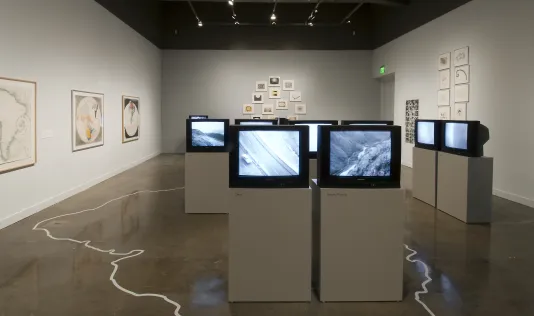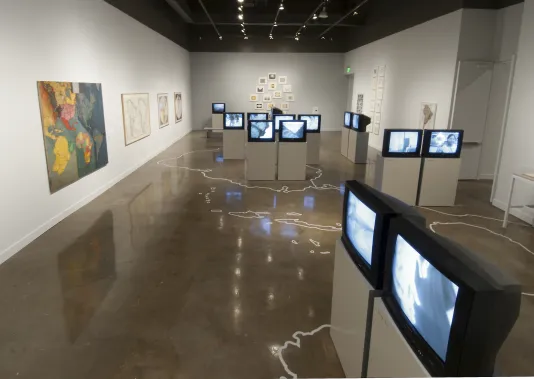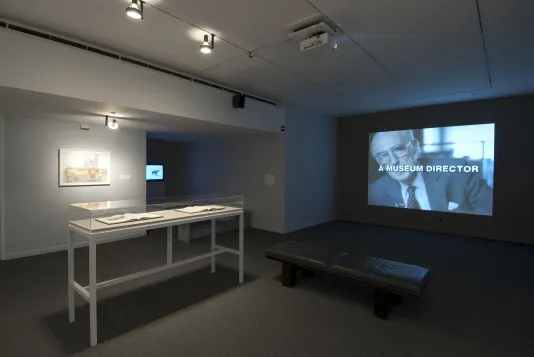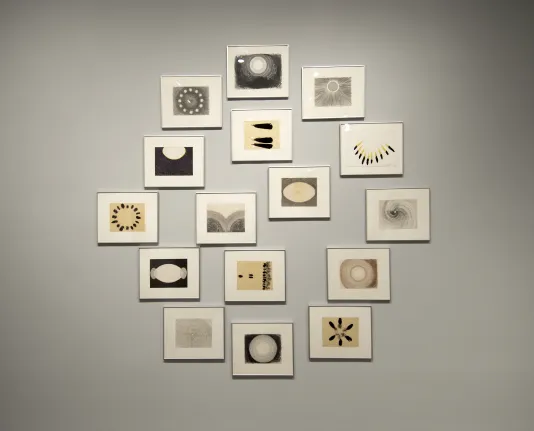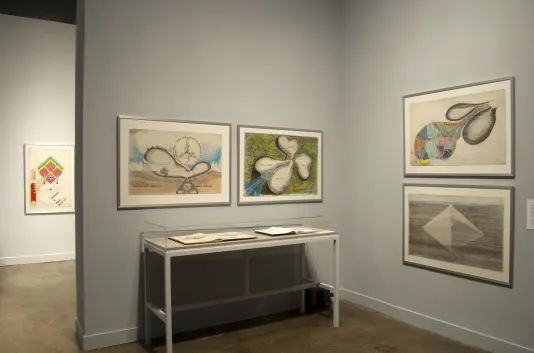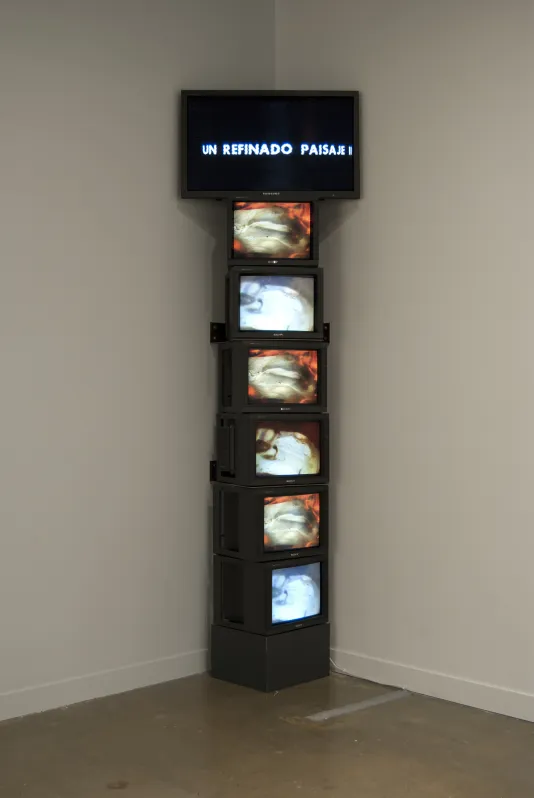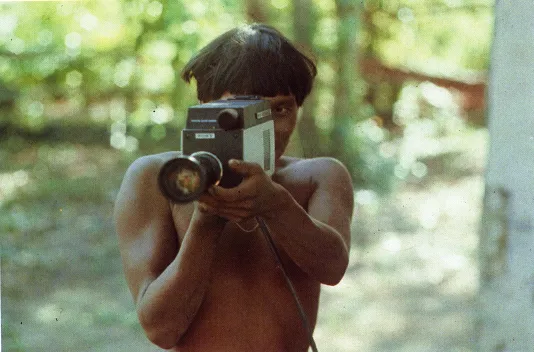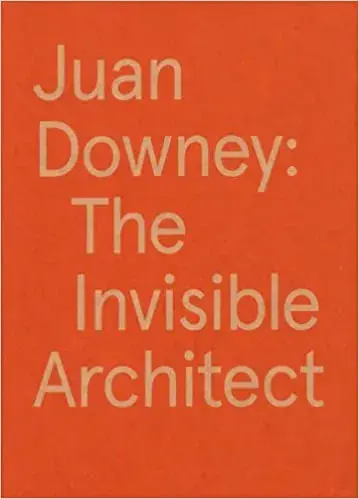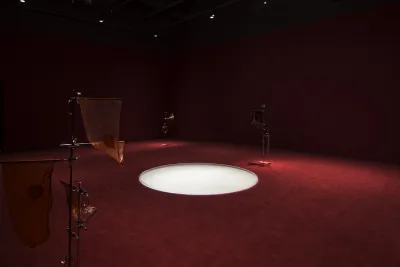Installation view of Juan Downey: The Invisiable Architect at MIT List Visual Arts Center, 2011.
Juan Downey: The Invisible Architect
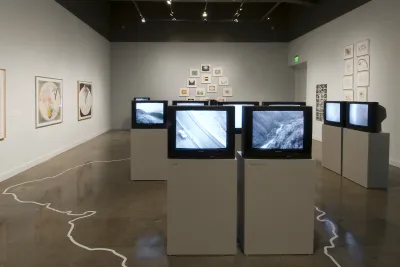
The MIT List Visual Arts Center in collaboration with The Bronx Museum of the Arts presents the first United States museum survey of the work of Chilean-born video artist Juan Downey (1940–1993).
Juan Downey: The Invisible Architect features a selection of key works by this under-recognized pioneer of video art. A fellow at MIT’s Center for Advanced Visual studies in 1973 and 1975, Downey played a significant role in the New York art scene of the 1970s and 1980s.
Ranging thematically over several decades of the artist’s work, the exhibition includes early experiments with art and technology that mark a shift from object-based artistic practice to an experiential approach seeking to combine interactive performance with sculpture and video. Along with this foundational early work, the exhibition also features Downey’s video installations of the 1970s and 1980s. These combine an autobiographical approach with the style of anthropological documentary—one of his most important contributions to the medium. In Downey’s later work, the intellectual and historical myths of European culture, as well as the roots of Latin American identity, are explored in complex video work that utilizes associative visual metaphors, collage-like techniques, and non-linear narrative.
In his two major series of works, Video Trans Americas and The Thinking Eye, Downey subjects the canonical and historical narratives of Western art to rich technical, visual, and intertextual analysis. In Video Trans Americas, begun in 1971, Downey anticipates much of the current interest in urbanism, post-colonial theory, and locality in contemporary artistic practice by mixing anthropology with autobiography. The Thinking Eye, a series made for public television, subjects the foundational concepts of Western culture—including the idea of the self—to linguistic, psychoanalytic, art historical, and semiotic interpretation, all through Downey’s mastery of video technology.
Presented in collaboration with The Bronx Museum of the Arts, Juan Downey: The Invisible Architect is organized by Valerie Smith, Curator at the Haus der Kulturen der Welt in Berlin. The exhibition will travel to the Arizona State University Art Museum, Tempe, AZ (September 24–December 31, 2011) and the Bronx Museum of the Arts in New York (February 12–May 20, 2012).
Reception preceded by a conversation with catalogue essayist Gustavo Buntinx and Marilys Belt de Downey, moderated by curator Valerie Smith at 5:30PM in the Bartos Theatre.
About the Artist
Juan Downey was born in Santiago, Chile, in 1940 and died in New York, NY, in 1993. He received a BA in Architecture from Pontificia Universidad Católica de Chile in 1961. He also studied at Stanley Hayter’s Atelier 17 in Paris from 1961-1965. From 1969 until his death in 1993 the artist lived and worked in New York, NY. He was an Associate Professor at the School of Architecture & School of Art and Design, Pratt Institute, Brooklyn, NY, from 1970-92.
Downey’s work can be found in the collections of The Bronx Museum of the Arts, New York, NY; The Baltimore Museum of Art, Baltimore, MD; Centre Pompidou/ Musée national d’Art moderne, Paris, France; The Corocoran Gallery of Art, Washington, DC; IVAM, Institut Valencià d’Art Modern, Centre, del Carme, Valencia, Spain; Moderna Museet, Stockholm, Sweden; Museu Chileno de Arte Precolombino, Santiago, Chile; The Museum of Modern Art, New York, NY; The Smithsonian Institution, Washington, DC; Tate Britain, London, UK; and the Whitney Museum of American Art, New York, NY.
Sponsors
Juan Downey: The Invisible Architect has been generously supported by The Andy Warhol Foundation for the Visual Arts; the National Endowment for the Arts, a Federal Agency; Martin E. Zimmerman; the Dedalus Foundation; the Milton & Sally Avery Arts Foundation; and Fundación Cisneros/Colección Patricia Phelps de Cisneros. Additional support has been provided for the Cambridge presentation by the Council for the Arts at MIT and the Massachusetts Cultural Council. Media Sponsor: Phoenix Media Communications Group.
